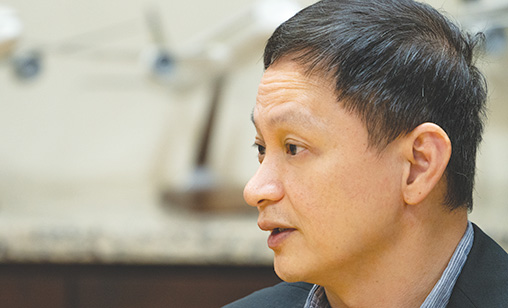News Backgrounder
Singapore Airlines pilots offer deeper salary cuts to save cockpit jobs
Anyone familiar with Singapore Airlines (SIA) group CEO, Goh Choon Phong, knows cutting 4,300 jobs from the group’s payroll was the most difficult task of his career. But the catastrophic impact of COVID-19 left him with no choice, reports associate editor and chief correspondent, Tom Ballantyne.
October 1st 2020
After the latest round of Singapore Airline Group retrenchments were announced in mid-September, the airline group’s pilots agreed to take deeper cuts in their salaries so more of their cockpit colleagues could remain employed, Singapore’s Straits Times has reported. Read More »
In addition to a cut in their Monthly Variable component benefit, re-employed captains and first officers will have their salaries reduced by 60% and 50%, respectively, at SIA and SilkAir. The new pay rates apply from October 1 to March 31 next year. The group employed approximately 2,600 pilots before the pandemic took hold, the newspaper said.
 |
“The company will implement additional pay cuts for all remaining pilots at Singapore Airlines and SilkAir with effect from October 1. As a result, this agreement will help mitigate future job losses for our pilots,” an airline group spokesman said.
Unlike many airlines in times of crisis, Singapore Airlines (SIA) tries to avoid mass sackings. So its announcement last month that retrenchments were unavoidable because of COVID-19 made clear the challenges the airline group faced.
In a message sent to more than 17,000 staff in mid-September, CEO Goh Choon Phong painted a grim picture of the group’s situation. There had been a “catastrophic” 99.5% decline in passenger carriage in the first quarter of fiscal year 2020-2021, he said, and the group was operating only 8% of its capacity compared with pre-COVID-19 times.
“Relative to most other major airlines in the world, the SIA Group is in an even more vulnerable position,” Goh said. “We do not have a domestic market which, as demonstrated in many countries, is the first to recover in air traffic.
“Given the expectation the road to recovery will be long and fraught with uncertainty it has come to the point where we have had to make the painfully difficult decision of implementing involuntary staff reduction measures.”
The airline is eliminating around 4,300 positions across SIA, its subsidiaries SilkAir and Scoot and outports. Some job reduction targets have been met by not filling vacancies, offering a generous Special Early Retirement Scheme (SERS) for ground staff and pilots and a Voluntary Release Scheme (VRS) for cabin crew. But another 2,400 jobs have to go.
In May, the SIA Group reported a net loss of US$155.8 million for the 12 months to March 31, a reversal from a $502 million profit a year earlier. In July, it announced it had lost $538 million in January to March, down from the $149.2 million net profit it reported in the same months a year ago. It was the largest quarterly loss in the history of the company.
SIA has done its best to soften the blow for departing employees. Retrenched staff will continue to receive their salaries until December 15 and will retain their medical coverage and other benefits until the same date.
Each affected employee will be paid in lieu of the notice period in their employment contract, which can be up to three months of salary. Those who have been in service for two years or more will receive one month of pay for every year of service, capped at 25 months.
Sadly, in an industry that not long ago was fretting about potential cockpit crew shortages, a new generation of pilots will have their careers put on hold. SIA has had let go about half of its 400 cadet pilots and cabin crew trainees. A spokesman said those who remain will be supported through their training programmes, but the airline could not keep them after that due to the “current surplus in staff numbers”. SIA will be open to hiring them should there be demand for cabin crew or junior pilots when air travel returns to pre-Covid levels, the airline said.
For Goh, all of this has been an emotional experience. “For our impacted colleagues, please know this is not a reflection of your individual strengths and capabilities. It is the result of an unprecedented travel paralysis brought about by a global pandemic. Please also be assured we will conduct the process in a fair and respectful manner and do our best to ensure you receive all necessary support during this very trying time,” he told employees in his message
Nobody could have predicted the devastating impact of COVID-19, he said. “Eight months on, the number of carriers that have collapsed continues to rise. It is not clear who will ultimately survive this crisis. From airlines and airports to aircraft manufacturers and suppliers, everyone has taken sweeping steps to cut costs – including drastic measures to reduce staff numbers - and prepare for an uncertain future,” he said.
“The future remains extremely challenging. The pandemic is not under control, with some countries experiencing second and third waves. We do not have a vaccine and tight border restrictions remain in place as governments try to limit imported cases. Global economic growth remains anaemic, with little impetus for the return of international leisure and business travel.”